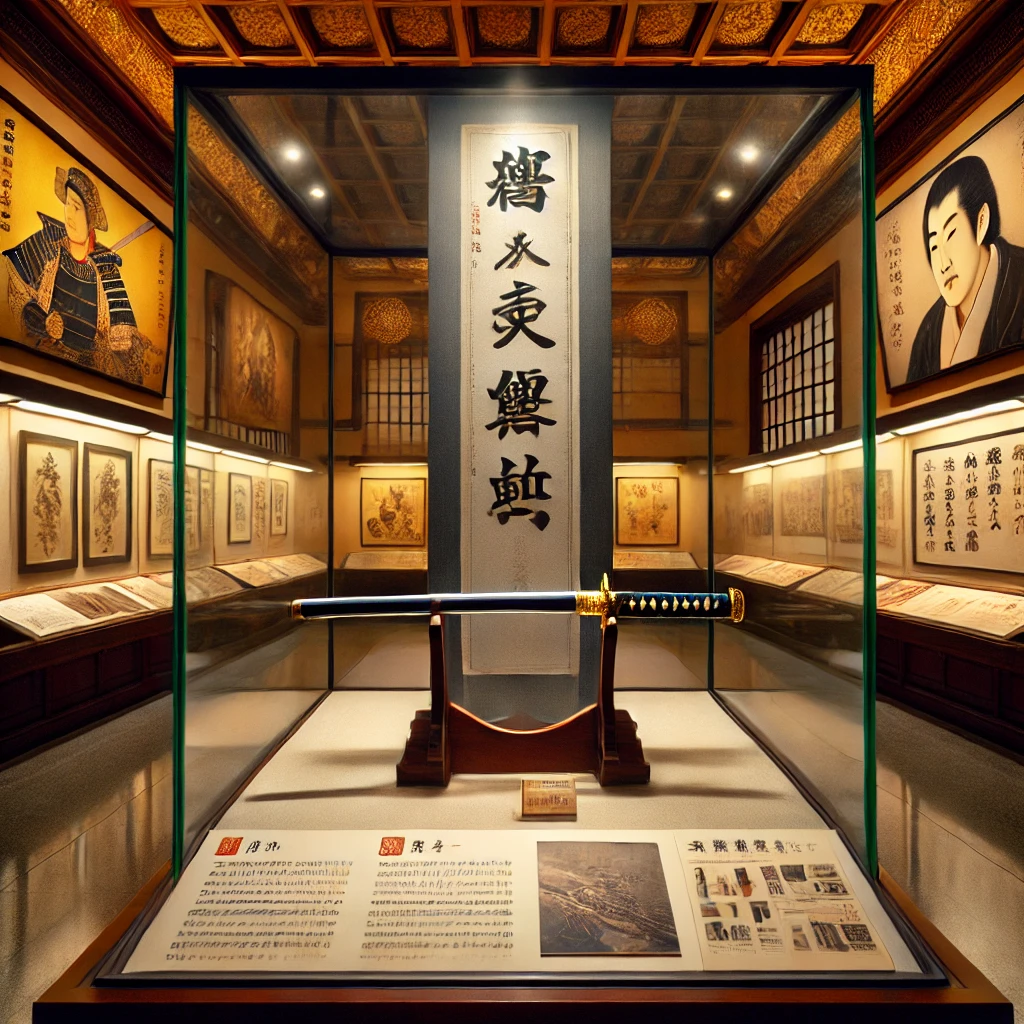The samurai katana sword has a deep historical connection with the Japanese Emperor. This iconic weapon, revered for its craftsmanship, played a symbolic role in Japan’s imperial history. The katana was not only a tool of war but also a symbol of authority and loyalty. Its significance extended far beyond the battlefield, influencing the relationship between the samurai and the Emperor.

I. The Katana as a Symbol of Imperial Power
First, the samurai katana sword symbolized the Emperor’s authority. During the feudal era, the Emperor was considered a divine figure. The katana, as a sacred weapon, represented his power and sovereignty. As a result, samurai who served the Emperor often carried katanas as a sign of their loyalty. This association between the katana and the Emperor reinforced the weapon’s importance in Japanese culture. Moreover, the katana was often presented as a gift from the Emperor to loyal samurai. This act further cemented the bond between the ruler and his warriors. Consequently, the katana became a symbol of imperial power.
II. The Role of the Katana in Imperial Ceremonies
Next, the samurai katana sword played a crucial role in imperial ceremonies. For example, the Emperor would present a katana to newly appointed shoguns. This ceremony symbolized the transfer of military power and authority. The katana, in this context, represented the Emperor’s trust in his chosen leader. Furthermore, the katana was used in various religious rituals. These rituals emphasized the divine connection between the Emperor and the sword. As a result, the katana became more than just a weapon; it was a sacred object in the eyes of the people. Therefore, the katana held a prominent place in the Emperor’s court.
III. The Katana and the Samurai’s Loyalty to the Emperor
Additionally, the samurai katana sword reinforced the samurai’s loyalty to the Emperor. Samurai were bound by a code of honor known as bushido. This code emphasized loyalty, honor, and duty to the Emperor. The katana, as the samurai’s primary weapon, symbolized these values. Consequently, the katana was more than just a tool for battle; it was a reminder of the samurai’s duty to serve the Emperor. Moreover, samurai would often swear oaths of loyalty on their katanas. These oaths further strengthened the bond between the samurai and the Emperor. Thus, the katana played a key role in maintaining the loyalty of the samurai class.
IV. The Katana in Imperial Art and Literature
Furthermore, the samurai katana sword influenced imperial art and literature. The katana was often depicted in paintings and writings associated with the Emperor. These depictions reinforced the katana’s status as a symbol of imperial power. For instance, the Emperor was sometimes portrayed holding a katana in historical artwork. This imagery highlighted the connection between the ruler and the weapon. Additionally, literature from the feudal period often featured stories of samurai who served the Emperor. In these stories, the katana was always present, symbolizing the samurai’s devotion. As a result, the katana became an enduring symbol in Japanese culture.
V. The Emperor’s Role in Preserving the Katana’s Legacy
Despite changes in Japan’s political structure, the Emperor played a role in preserving the katana’s legacy. During the Meiji Restoration, the samurai class was abolished, but the katana remained a symbol of Japan’s cultural heritage. The Emperor, as the nation’s spiritual leader, continued to honor the katana’s significance. For example, the Emperor supported the preservation of traditional sword-making techniques. This support ensured that the katana’s legacy would endure even as Japan modernized. Moreover, the Emperor’s continued reverence for the katana helped maintain its status as a national symbol. Consequently, the katana’s connection to the Emperor persisted into modern times.
VI. The Katana in Modern Imperial Japan
In modern Japan, the samurai katana sword remains linked to the Emperor. Although the katana is no longer a weapon of war, it still holds ceremonial value. The Emperor sometimes presents katanas as gifts to honor individuals or institutions. This practice reflects the katana’s enduring role as a symbol of authority and respect. Furthermore, the katana is often displayed in museums dedicated to the imperial family. These displays highlight the historical connection between the katana and the Emperor. As a result, the katana continues to be a significant cultural artifact in Japan. Therefore, the katana’s relationship with the Emperor remains relevant in contemporary society.

VII. Conclusion
In conclusion, the samurai katana sword has had a profound impact on the relationship between the Japanese Emperor and his people. It served as a symbol of imperial power, played a crucial role in ceremonies, and reinforced the loyalty of the samurai. Additionally, the katana influenced art and literature and was preserved as a cultural symbol by the Emperor. Even in modern Japan, the katana remains a significant symbol associated with the Emperor. As we reflect on Japanese history, the katana’s relationship with the Emperor highlights its enduring influence on the nation’s culture and identity. The samurai katana sword is, indeed, more than just a weapon; it is a symbol of Japan’s imperial legacy.